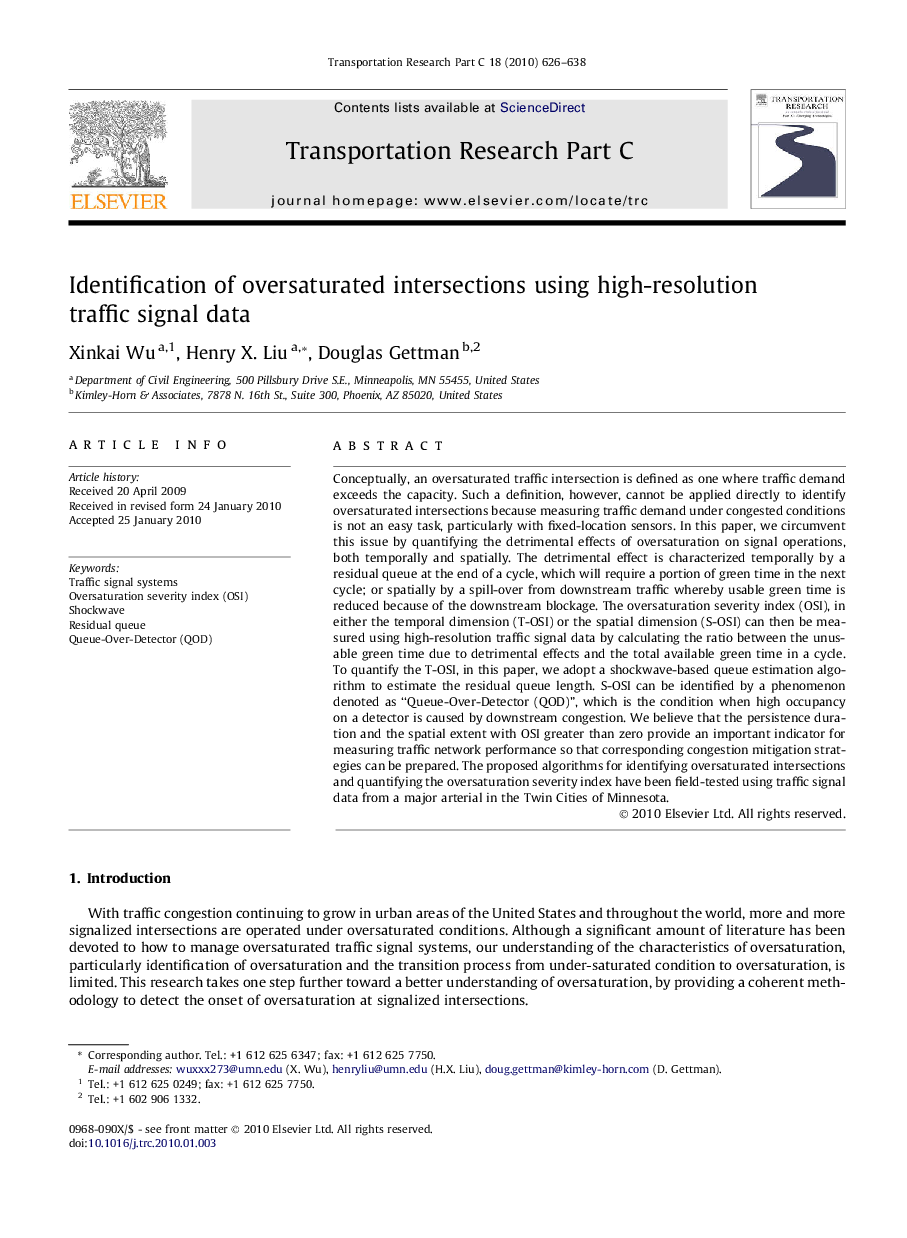| Article ID | Journal | Published Year | Pages | File Type |
|---|---|---|---|---|
| 525372 | Transportation Research Part C: Emerging Technologies | 2010 | 13 Pages |
Conceptually, an oversaturated traffic intersection is defined as one where traffic demand exceeds the capacity. Such a definition, however, cannot be applied directly to identify oversaturated intersections because measuring traffic demand under congested conditions is not an easy task, particularly with fixed-location sensors. In this paper, we circumvent this issue by quantifying the detrimental effects of oversaturation on signal operations, both temporally and spatially. The detrimental effect is characterized temporally by a residual queue at the end of a cycle, which will require a portion of green time in the next cycle; or spatially by a spill-over from downstream traffic whereby usable green time is reduced because of the downstream blockage. The oversaturation severity index (OSI), in either the temporal dimension (T-OSI) or the spatial dimension (S-OSI) can then be measured using high-resolution traffic signal data by calculating the ratio between the unusable green time due to detrimental effects and the total available green time in a cycle. To quantify the T-OSI, in this paper, we adopt a shockwave-based queue estimation algorithm to estimate the residual queue length. S-OSI can be identified by a phenomenon denoted as “Queue-Over-Detector (QOD)”, which is the condition when high occupancy on a detector is caused by downstream congestion. We believe that the persistence duration and the spatial extent with OSI greater than zero provide an important indicator for measuring traffic network performance so that corresponding congestion mitigation strategies can be prepared. The proposed algorithms for identifying oversaturated intersections and quantifying the oversaturation severity index have been field-tested using traffic signal data from a major arterial in the Twin Cities of Minnesota.
